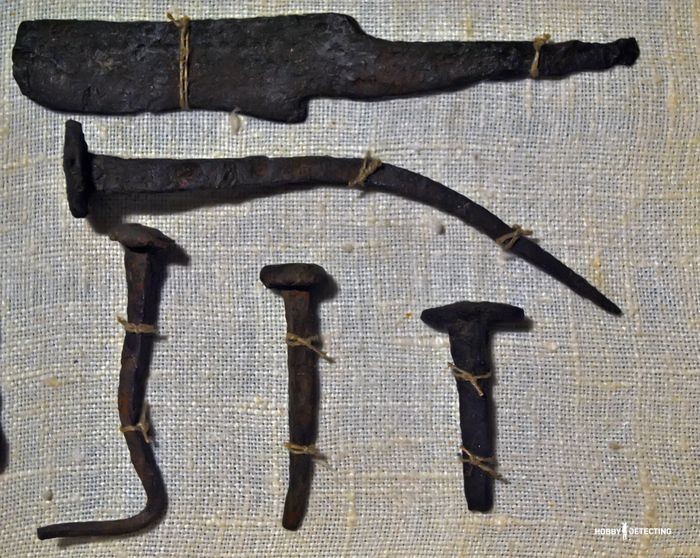Dunes: sands of time. (Competitive story of a digger!)
Several years ago, after the first puppy delight of buying a metal detector and empty trips, it quickly became clear that without prior preparation, waving a frame over the earth’s surface is akin to shouting through the window: “Freebies come.” !.
Planning the search for artifacts turned out to be no less interesting than the search itself. A comparison of the modern map with the topographic boundary map of the province of 1858, taken under the direction of A.I. Mende (two-layout), revealed not only many villages, farmsteads, and churchyards that have now disappeared, but also significant changes in the relief and hydrography. In the latter case, they are associated with both human activity and climate change, and, as a consequence, — shallowing in recent decades of the Oka River basin. As a result, the coastal strip, which contains traces of ancient human settlements, in which we have had a long-standing interest, is densely overgrown with bushes and in many places has become unsuitable for search.
In the vicinity of the city, we knew of two Bronze Age settlements…, but both of them were listed in the register of archaeological monuments and it was somehow not comfortable to go there with metal detectors. Examining their position on the two-layer site, we noticed an interesting feature: both sites were located, as it were, on meadow islands. On their northern side they were limited by the riverbed of the Oka, and from the high right bank they were separated by a semi-circle of river channels connected to the main channel – oxbow lakes, from which a chain of small lakes has survived in our time. In the middle of these islands there were sand dunes, chosen by our ancestors for living.
Deciding to find out whether this was a coincidence or a pattern, we turned to the map again. To our surprise, downstream we discovered a place exactly similar to the previous two: dunes surrounded by channels. It was not mentioned in the register of monuments, and, naturally, the departure, with general approval, was scheduled for the next day.
The team gathered near the cars looked heroic and beautiful – camouflage, combat boots, bandanas, various bells and whistles, with which everyone hung themselves to the best of their ability. In a word, all this was reminiscent of the equipment of inexperienced gold miners from the stories of Jack London, defined by him with the capacious word “chechako” — newbie. The sparkle in the eyes in anticipation of the treasure under the roots of the pine tree, and the confidence in the inevitable success, only strengthened this similarity.
After the usual slight confusion and hubbub in such cases (someone did not fit in the back seat and was asked to shorten his legs), we drove out onto the track without incident, and from it & #8212; on a meadow primer. The navigator, who did not want to show the way, and, as a compromise, offered to return to the starting point, was cursed and turned off, and we trusted the knurled track.
Several times cars dived into hollows that, judging by the map, were once oxbow lakes, but now completely overgrown with willows. Sometimes the branches closed over the road, forming a kind of tunnel: the air inside was hot, with the smell of heated leaves and a village bathhouse. Suddenly the track disappeared, crumbling into several strips of trampled grass, and we jumped out into a meadow that surrounded a group of hills — the purpose of our trip.
After looking around, we decided on a dune, the middle of which had once settled, and some of the sand flowed out beyond the boundaries of the hill, forming a fairly flat area. We went to these “sands of time.”
Our assumptions about the presence here, as in the suburban sites, of traces of ancient human activity were almost immediately confirmed: several stone scrapers of various shapes and fragments of ceramics were lifted directly from the surface.
The beginning was encouraging: we set up metal detectors and, like mowers, walked in a chain. The first signal: a small iron blade of “Slavic type” was found at shallow depths. Some time ago, apparently, the narrow end of the blade broke off, and the owner sharpened it in a semicircle, like a modern table knife.

We moved further from the edge of the site to the center of the dune. A few more bells ring: forged nails and a completely modern butterfly knife. The search area was narrowing, and along with it, enthusiasm was fading and some unstable individuals were already starting to move towards the cars to do more interesting things: preparing a picnic.

We caught the last signal at a small sandy hillock: at the depth of the spade bayonet lay a bronze fibula buckle – an oval ring, corroded by time and covered with a green patina. An unknown craftsman once applied a simple jagged pattern along the outer diameter of the buckle, the shank of the needle wrapped around one of the sides like a spiral, and the same spirals completed the ring at the point where it broke – they kept the buckle needle from unfastening.

We didn’t find anything else that day. Then there were other trips, successful and not so, but always interesting. Someone abandoned this activity, and those who remained could no longer be called “chechako.”

Last summer we accidentally ended up not far from the place of our first search. Instead of the “sands of time” we were greeted by thickets of nettles the size of a man and traces of a bulldozer — Several new cottages have appeared in the nearby village…
Sent by comrade Alexey F.
